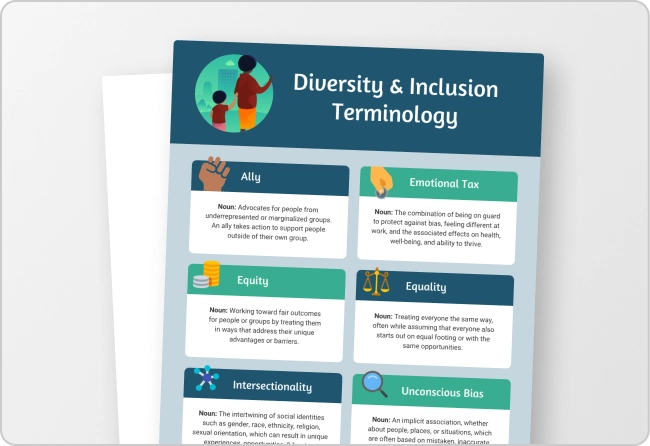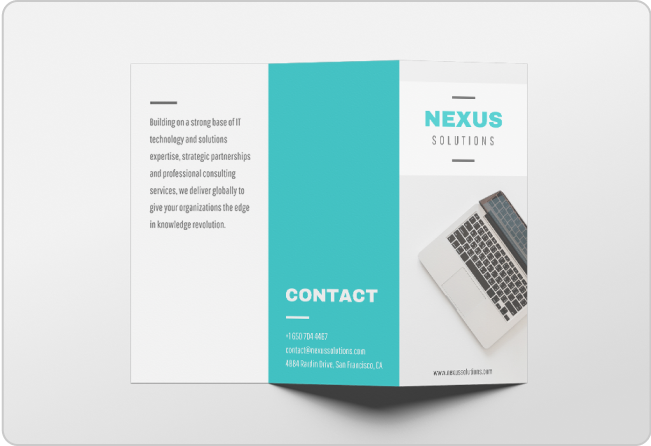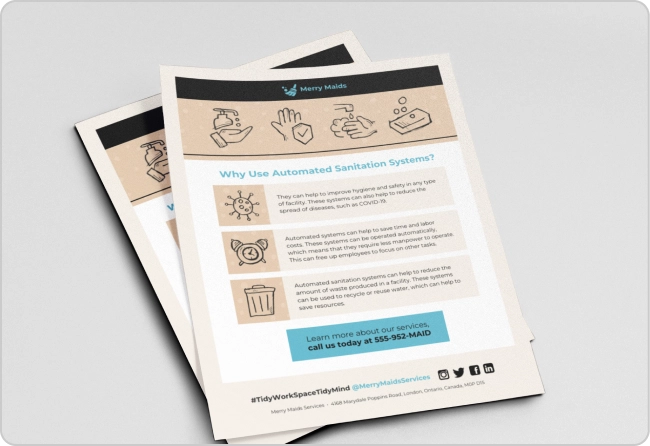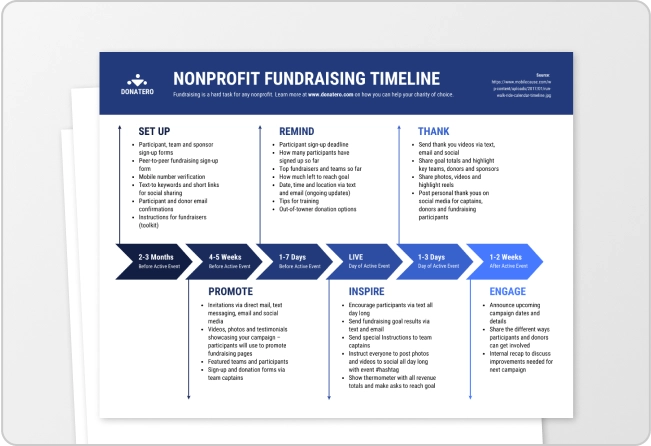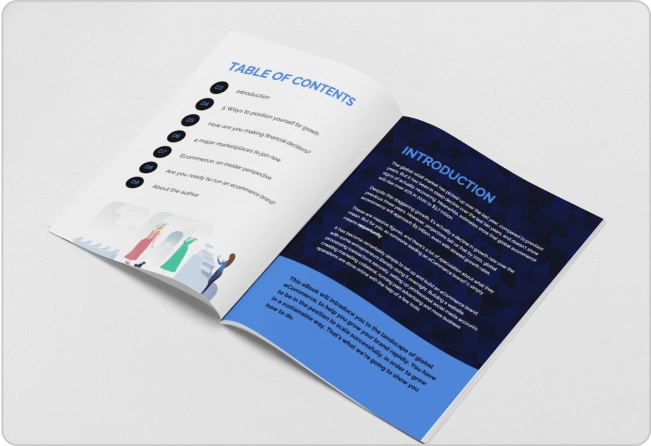
ER diagrams are not just mere illustrations but the backbone of the conceptual data model, a critical phase in database development that precedes the more granular logical and physical data models.
ER diagrams embody the essence of entity relationship modeling, serving to capture all the entities—ranging from a strong entity like an employee record to a weak entity that cannot exist without a strong one—and their interconnections, ensuring that every primary key and foreign key is meticulously mapped out to pave the way for a coherent, well-organized database.
They help identify relationships, whether one to one, one to many or many to many and illuminate the path to streamlining database structure by eliminating redundant entities and fostering efficient data storage.
With tools like Venngage Diagram Maker, creating an ER diagram is not just accessible but an engaging experience. Whether it’s about mapping out a new database or dissecting an existing database, Venngage’s collection of ER Diagram Templates allows database designers to craft diagrams that speak volumes about their data models.
Click to jump ahead:
- What is an ER diagram?
- History of ER models
- Entity relationship diagram examples
- ERD symbols and notations
- How to draw ER diagrams?
- What is the use of ER diagrams?
- Final thoughts
What is an ER diagram?
An Entity-Relationship (ER) diagram is a specialized diagram that illustrates the interrelationships between entities in a database. ER diagrams are designed to reflect the entity relationship model, a framework that dictates how data is connected and structured within a database.
Each entity contains key attributes, including a primary key that uniquely identifies each record within the entity set. Relationships, depicted by lines between these entities, showcase how data in one entity relates to data in another—be it through a primary and foreign key pairing in a one-to-many relationship or a many-to-many relationship necessitating a junction table. Additionally, attributes such as the derived attribute, which is based on another attribute within the database, can also be displayed within an ER diagram, enriching the data model with more nuanced details.
ER diagrams serve as a map for database designers to create, refine and implement database schemas for relational databases.
By depicting entities (like a student entity or a course entity), their relationships (like a student enrolled in multiple courses) and all the associated attributes (like phone numbers or faculty members), these diagrams help to identify relationships and ensure that the data stored in an actual database is organized efficiently.
Symbols and notations, like cardinality and modality, are used within ER diagrams to represent relationships clearly, providing an essential communication tool that supports the alignment of database structure with business processes.
History of ER models
The Entity-Relationship (ER) model was developed by Peter Chen in 1976 to provide a unified framework for data modeling. It became a foundational concept for relational database design, allowing for the representation of data structures and their relationships in a clear, abstract way, facilitating database design and other systems applications.
Entity relationship diagram examples
Entity Relationship Diagrams (ERDs) act as blueprints, detailing how entities relate to each other within the system. These diagrams help to ensure that all the necessary data is accounted for and that it is organized in a way that supports the database’s logical structure and business processes.
Let’s explore five different ER diagram examples that cater to various aspects of a business’s data needs, each illustrating the relationships and attributes of their entities with clarity and precision.
Product ER diagram examples
Product inventory ER diagram
In a product inventory ER diagram, the emphasis is on managing the data related to products, stock levels, suppliers and warehouses. The entities in this diagram would include ‘Items,’ ‘Inventory’ and ‘Order.’ A Warehouse Management System (WMS) can use this structured data to optimize stock tracking, streamline fulfillment processes, and ensure real-time inventory accuracy.
A primary key would uniquely identify each product, while foreign keys would connect relationships between products and suppliers and inventory levels in warehouses. This ER diagram would be essential for database management systems in retail operations, showcasing a one-to-many relationship between suppliers and products or a many-to-many relationship if products are sourced from multiple suppliers.
Product point of sale ER diagram
The product point of sale (POS) ER diagram is focused on the transactional entities involved in the retail checkout process. This ER diagram would illustrate entities such as ‘Product,’ ‘Orders,’ ‘Payment Type’ and ‘Customer Type.’
Each ‘Product’ record could be connected to multiple ‘Product’ records, indicative of a many-to-many relationship, requiring a junction table to handle the multiple line items in a single transaction. POS ER diagram would also identify relationships between sales and payment methods, encapsulating the business process at the point of sale.
In both examples, ER diagrams serve as the conceptual data model that guides the creation of a logical data model and eventually the physical data model. They help database designers in defining entities and relationship types, ensuring that all the data necessary for the operation of a business process, such as inventory management or sales transactions, is represented accurately within the relational database.
Human resource ER diagram
A Human resource (HR) ER diagram is created to manage and represent the relationships between various entities within a company’s HR database. This type of diagram would typically include entities such as ‘Employee,’ ‘Department,’ ‘Role’ and ‘Login.’
An ‘Employee’ entity, for instance, would have attributes like Employee ID (the primary key), name, contact information, address and other personal details. It could also include derived attributes such as ‘age’ or ‘years with company,’ calculated from the date of birth or hire date.
In this ERD, the ‘Employee’ entity would have a relationship with the ‘Department’ entity, showing which department the employee works in and potentially a one-to-many relationship indicating that one department can have many employees.
Similarly, relationships between ‘Employee’ and ‘Role’ would define what role an employee fill. An HR ER diagram supports HR departments in tracking employee data, optimizing the departmental structure and managing employee-related information effectively.
Banking system ER diagram
A Banking system ER diagram is more complex, given the nature of financial transactions and the range of services offered by financial institutions. In this ER diagram, one might see entities such as ‘Customer,’ ‘Bank Account,’ ‘Transaction’ and ‘Bank.’
The ‘Customer’ entity would hold information about the bank’s clients, with each record uniquely identified by a Customer ID. ‘Bank Account’ would detail various account types (checking, savings, etc.) and would include a foreign key to the ‘Customer’ entity to signify account ownership.
The ‘Transaction’ entity would document all customer transactions and might be linked to the ‘Account’ entity with a foreign key to reflect the account from which the transaction was made. This could involve a complex many-to-many relationship if customers can transfer funds between different accounts.
The ‘Bank’ entity would represent the banking institution itself. It has one attribute, ‘Name’, which would be the name of the bank. For both ‘Customer’ and ‘Employee,’ key attributes would be used to uniquely identify individuals within those entities.
Customer mobile payment ER diagram
An ER diagram illustrating a customer mobile payment system provides a conceptual model of how mobile payment data is organized within a database.
Such a diagram helps in understanding the logical structure of the database and the relationships between different entities involved in mobile payments.
The entities such as Customer, Mobile, Bill and Login are central to this model and their interconnections are critical for the representation of a robust and efficient mobile payment system.
Customer
- May have attributes like CustomerID (as the primary key), Name and ContactDetails.
- Could be related to the Mobile entity indicating ownership or usage of a mobile device.
- Is linked to the Bill entity to represent payments made by the customer.
Mobile
- Might include attributes such as Mobile phoneID (primary key), Name and Price.
- Connects to the Customer entity, suggesting that a customer uses or possesses the mobile device.
Bill
- Could have attributes like Price and Bid.
- Linked to the Customer entity, to represent the obligation of the customer to pay the bill.
Login
- Likely has attributes such as Username and Password (potentially as a derived attribute for security)
Blank ER diagram example
A blank ER diagram example serves as a template to be used in database design for a variety of applications. It usually contains the standard symbols and notation conventions used in entity-relationship modeling, such as rectangles for entities, diamonds for relationships and ovals for attributes.
The primary purpose of such a blank ER diagram is to allow a database designer to conceptualize the data model by defining all the entities relevant to a business process, their key attributes and the relationships among those entities.
The blank ER diagram can then be fleshed out into a logical data model and eventually a physical data model, which includes all the implementation-specific details such as data types and constraints.
The progression from a conceptual model, through a logical model, to a physical model is a critical process in database design, ensuring that the actual database system is well-organized, efficient and scalable.
ERD symbols and notations

Entity-Relationship Diagrams (ERDs) are a fundamental part of database design and modeling. They represent the logical structure of databases. Here are the primary symbols and notations used in ERDs:
- Entities: Represented by rectangles, entities are objects or concepts about which data is stored. Each entity has a name which is typically a noun, such as “Customer” or “Order”.
- Attributes: Represented by ovals, attributes are the data we collect about the entities. An attribute may be a primary key (underlined), which uniquely identifies each instance of the entity.
- Relationships: Depicted by diamonds, relationships show how two entities share information in the database. The name of the relationship is often a verb, such as “buys” or “owns”.
- Connecting lines: Solid lines are used to connect entities to attributes and entities to relationships, illustrating the linkage between them.
- Cardinality and modality: These are the indicators of the nature of the relationship between entities. Cardinality refers to the number of instances of one entity that can or must be associated with each instance of another entity. Modality (or optionality) indicates whether or not an instance of an entity is mandatory and can be shown by either a circle (optional) or a bar (mandatory).
- One-to-One (1:1): A single instance of an entity is associated with a single instance of another entity.
- One-to-Many (1:N): A single instance of an entity is associated with many instances of another entity.
- Many-to-One (N:1): Many instances of an entity are associated with a single instance of another entity.
- Many-to-Many (N:N): Many instances of an entity are associated with many instances of another entity.
- Weak entities: Sometimes represented by a double rectangle, a weak entity is an entity that cannot exist in the database without the existence of another entity (its owner).
- Identifying relationships: Depicted by a double diamond, these represent the connection between a weak entity and its owner entity.
- Derived attribute: Represented by a dashed oval, a derived attribute is one whose value is calculated from other attributes.
- Composite attribute: If an attribute is made up of multiple components, it is shown as an oval with ovals inside it, indicating the composition.
- Multi-valued attribute: Depicted by a double oval, a multi-valued attribute can have more than one value for a single entity (like multiple phone numbers for one person).
- Participation constraints: Sometimes, there are constraints on how entities participate in relationships, which are depicted by placing either “partial” or “total” on the lines that connect entities to relationships.
How to draw ER diagrams?
Let’s explore the fundamentals of crafting an ER diagram, from identifying entities and defining relationships to incorporating attributes and leveraging advanced diagramming tools, ultimately underscoring the substantial benefits that these diagrams offer in the field of data modeling.
1. Identify all entities
When creating an ER diagram, the first step is to identify all entities within the system. An entity represents a real-world object or concept that holds data in a database. In an ER diagram, entities are typically depicted as rectangles, each labeled with a singular noun that best represents the object or concept it symbolizes. It’s crucial to ensure clarity and avoid duplication, making certain that each entity appears only once in the diagram. This practice aids in establishing a clear and organized representation of the data to be managed within the database.
2. Determine relationships
Understanding and defining how entities are connected is a fundamental aspect of modeling a system with an ER diagram. Relationships articulate the associations between entities, acting as verbs to describe interactions or connections. They are graphically represented by lines linking entities, often with a diamond-shaped symbol to detail the nature of the relationship. These connections can signify various types of associations, like ownership, membership or reference and are key to mapping out the logical structure of a database.
3. Add attributes to entities
Each entity in an ER diagram has attributes, which are specific pieces of information that the database stores. These are represented as ovals connected to their respective entities by a line and each attribute is named descriptively to ensure the information is clearly communicated. Attributes can range from simple, such as a name or date, to more complex data types like addresses or descriptive text. Properly defining attributes is crucial for detailing the structure and storage of data related to each entity.
4. Define primary and foreign keys
A primary key is a unique identifier for each entity instance, ensuring that each record can be uniquely distinguished from others. Conversely, foreign keys are attributes that create a link between two entities, establishing a relationship by referencing the primary key of a different entity. The correct implementation of primary and foreign keys is vital in an ER diagram as it forms the basis for relational database design, allowing for data integrity and efficient querying.
5. Use best practices
To maintain clarity and effectiveness in an ER diagram, it’s important to adhere to best practices. These include avoiding vague or redundant entities and relationships and never directly connecting relationships to each other—relationships should only exist between entities. Utilizing colors and standard shapes can also be beneficial to categorize and emphasize components of the diagram, making it more intuitive and accessible.
6. Consider weak entities and relationship types
Weak entities are those that do not have a sufficient set of attributes to form a primary key. They are often dependent on another entity (a strong entity) for identification. Moreover, it’s crucial to identify and represent the types of relationships—such as one-to-one, one-to-many or many-to-many—since they define how entities are related and the nature of their interactions. Accurate depiction of these elements is key for a comprehensive ER diagram.
7. Understand the benefits
The primary advantage of using ER diagrams lies in their ability to visually represent the logical structure of databases. They provide a clear methodology for translating conceptual models into physical databases, ensuring efficient database design and implementation. ER diagrams facilitate communication among stakeholders, provide a blueprint for database creation and help foresee potential design issues before they become problematic.
8. Leverage software tools
For the development of more intricate ER diagrams, employing specialized software tools like Venngage Diagram Maker is highly recommended. It offers a suite of pre-designed templates and symbols tailored for ER diagramming, which can greatly simplify and accelerate the creation process. It also often includes features that enable more dynamic and complex modeling, beneficial for representing intricate systems.

What is the use of ER diagrams?
ER diagrams are widely used in database and systems design for various purposes:
- Database Design:
- ER diagrams are instrumental in modeling and designing relational databases, capturing both the logical framework of the database (logical data model) and the specifics of the technology to be implemented (physical data model)
- Visualizing Data and Relationships:
- They serve to visualize data and the interconnections among the entities within a system, clarifying the logical structure and the flow of information within the data model.
- Modeling Stored Data:
- Essential for modeling the data stored in a database, ER diagrams specify the entities and their attributes and how these entities relate to one another. They form the foundational design upon which databases are built.
- Understanding Entity Relationships:
- ERDs enable one to see how different entities, such as people, customers or objects, relate to each other within an application or a database, which is crucial when designing new systems for clear database structure.
- Analyzing Data Requirements:
The ER model assists in the systematic analysis of data requirements to produce a well-designed database, representing real-world entities and the relationships between them.
Related: 10+ Types of Diagrams and How to Choose the Right One
Final thoughts
From the historical context that has shaped their evolution to the diverse examples that demonstrate their versatility, ER diagrams are indispensable for conceptual, logical and physical data models.
Whether you are mapping out the structure for a banking system or delineating the complexities of human resource management, ER diagrams stand as faithful guides to translating business requirements into actual database structures.
Remember that an ER diagram is not just a diagram; it’s a conceptual gateway to efficient and effective database management. With the power of ER diagrams at your fingertips, facilitated by intuitive tools like Venngage Diagram Maker with its customizable templates, you can step confidently into the world of database design, ready to handle the complexities of relational databases and the nuances of data modeling with expertise and ease.





































